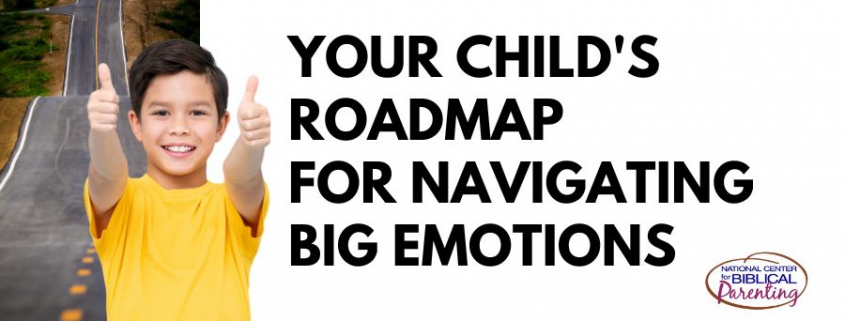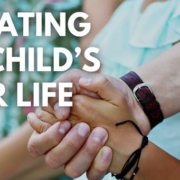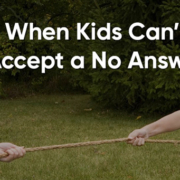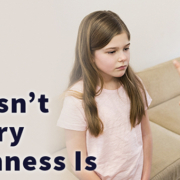Help Your Child Navigate Big Emotions
By Presenter, Coach and Guest Blogger BJ Meurer
In the journey of parenting, there’s no GPS to navigate the intricate pathways of emotions. Every family needs a roadmap for helping their children manage BIG emotions when they come. Yet many families feel like they’re sitting on the side of the road with 3 flat tires and a check engine light on every time their child is overcome by another wave of feelings of anger, sadness, or anxiousness. They feel lost and unsure of which way to turn.
No parent wants to tell their child to stuff their emotions or not be authentic, and at the same time no parent wants to teach their child that it’s OK to just vent every feeling in an uncontrolled manner. But is there a third option? A better road to take?
Jesus says yes. It’s crucial to equip our children with the tools they need to recognize, understand, manage, and relate to their emotions, and parents need to teach them to do so while responding with a grace, love, gentleness, and firmness that is rooted in our faith.
Enter God’s original design for emotions.
Emotions as Signals for the Heart
In the context of our faith, emotions are not to be labeled as good or bad. Instead, they are simply signals that God uses to capture our heart’s attention. Just as a car dashboard’s lights illuminate to prompt us to take action, emotions serve as indicators for our hearts. To navigate this emotional landscape effectively, it’s essential to understand that different emotions signal our hearts to respond in different ways. When we don’t know how to respond to different emotions, we’re about as helpful as someone checking the seatbelts in the car when the check oil light comes on the dashboard. Sure, we’re doing something, but it’s just not going to help.
Noticing Emotional Signals
In Psalm 139:23 we read, “Search me, God, and know my heart; test me and know my anxious thoughts.” Noticing emotions is the first step to understanding them. God created our bodies as finely tuned instruments that send us emotional signals throughout the day. Just as our spoken language helps us communicate, our emotions communicate through our physical being. For example:
- Happiness: When we’re happy, our faces light up with smiles, and our bodies exude positivity. It’s a signal that everything is going well.
- Sadness: On the flip side, sadness often manifests as tears and a downward gaze. It’s a signal that something is amiss and needs attention.
- Anxiousness: Anxiousness can lead to sweating, shaky hands, and a racing heart because we are concerned about something that might happen to us or a loved one. These signals remind us to take a deep breath and find calm in the storm.
- Anger: When anger flares, our bodies may heat up, and our shoulders might tense because something is wrong. This signal calls us to slow down and manage our anger in godly ways, seeking reconciliation, peace, and understanding.
Recognizing these emotional signals in ourselves is the first step in helping our children do the same. As parents, we must set an example by being in touch with our emotions, acknowledging them, and responding appropriately. This helps create a safe and nurturing environment where our children feel comfortable exploring their feelings.
Teaching Emotional Awareness
To teach your child how to notice emotions, start by building their emotional vocabulary. Use simple language that they can understand. For instance, when your child is upset, you can say, “I see that you’re feeling sad right now.” or “I see your eyebrows are down and your clenching your teeth. What emotion are you feeling?” This simple act can help them connect their body cues with the corresponding feelings.
Engage in conversations about emotions regularly. Share stories from the Bible that demonstrate how various biblical figures grappled with their feelings. Show your child that even heroes of faith experienced emotions like fear, sadness, and anger. Discuss how these figures turned to God for guidance and strength during these times.
Provide visual aides such as emotion scales, pictures of emotion, and similar aides to help children continue to understand the connection between body signals and emotions. The stronger this connection is for your child, the faster your child will be able to recognize the cues their body is sending them. This means your child stands a greater chance of navigating those emotions successfully because he or she will catch the emotion earlier in the cycle before the emotion gets too big and overwhelming.
Your Child’s Roadmap for Navigating BIG Emotions
As your child gets better at noticing emotions, it’s important to have a roadmap for what to do next in navigating those emotions successfully. To further assist you on this journey, I’ve created a free parenting resource entitled Your Child’s Roadmap for Navigating BIG Emotions. This guide provides a specific, step-by-step roadmap filled with strategic tips, biblical insights, and practical activities to help your child successfully recognize, understand, and navigate BIG emotions the way Jesus calls us to. You can grab your copy HERE.












Leave a Reply
Want to join the discussion?Feel free to contribute!